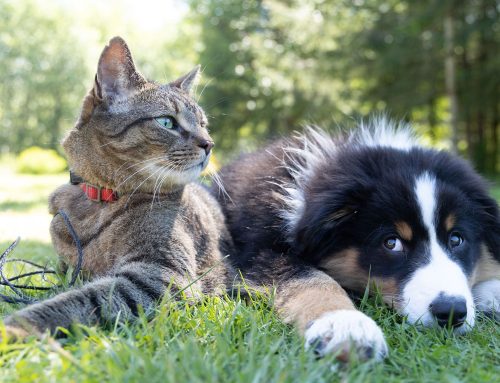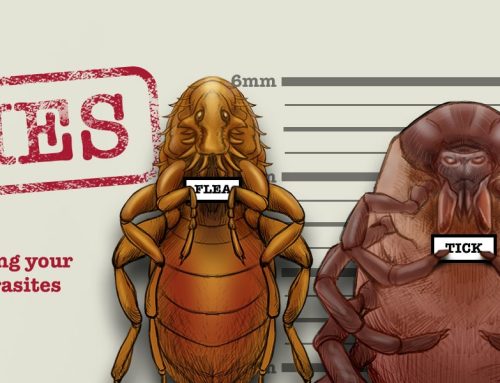Cats get the snuffles and sneezes just like humans, though it is caused by different organisms. Cats (and dogs) cannot catch the flu from humans and vice versa.
‘Cat flu’ refers to upper respiratory tract infections, most of which are caused by one of two viruses – feline herpes virus and feline calicivirus. Since these are included in cat vaccinations, cat flu is most commonly seen in unvaccinated cats.
Another common respiratory infection is Feline Chlamydia. This disease is principally recognised as conjunctivitis and is predominantly seen in young kittens aged 5 to 9 months.
What are the signs of cat flu?
- Sneezing and snuffling are common signs caused by inflammation in the nasal cavity and sinuses.
- Conjunctivitis results in eye discharges.
- Mouth ulcers and coughing may occur.
- Viral infection is often accompanied by fever, so the cat is depressed, listless and reluctant to eat, especially if he can’t smell his food due to buildup of discharge in the upper respiratory tract.
- Some cats become dehydrated.
- The severity and length of the clinical signs depends on the cat’s immune system, so that young kittens, older debilitated cats, and unvaccinated cats are most severely affected.
- Young, unvaccinated kittens can die from cat flu.
How is cat flu diagnosed?
Cat flu is diagnosed on the basis of clinical signs. If required, the virus can be identified by sending a swab of discharge or tears to the laboratory.
How is cat flu treated?
Since cat flu is caused by viruses, there are no treatments that will kill the virus, except for an antiviral drop for eye ulceration. Antibiotics are used if secondary bacterial infections are present, and supportive therapy includes drugs to stimulate appetite, decongestants, multivitamins, and fluids to prevent or treat dehydration.
Chlamydia primarily causes conjunctivitis for one to three months, and occasional sneezing or snuffling, especially in cats under six months of age. Specific antibiotic treatment is prescribed if chlamydial infection is suspected. All cats in the household should be treated with this antibiotic.
In most cases, cat flu is a self-limiting disease as the cat’s immune system overcomes the virus. This process is aided by antibodies already present in a vaccinated cat.
How can I help my cat with cat flu?
Give any medications as prescribed. You can aid nasal decongestion by placing your cat in a steamy environment, such as a small bathroom with the hot tap turned on, or by using a steamer available from chemists.
Remove nose and eye discharge with moistened tissues and encourage your cat to eat by offering strongly flavoured foods such as warmed sardines.
What is a ‘chronic snuffler’?
These are cats with chronic persistent signs (i.e. nasal discharge and sneezing) and they often require management for years. After a bout of cat flu, many cats become virus carriers who shed the virus either continuously or intermittently when they are stressed (such as boarding or hospitalisation).
The most severe cases are candidates for surgery to help alleviate clinical signs to improve quality of life.
How can I prevent cat flu?
Vaccination from an early age is recommended to build up antibodies to prevent infection. Vaccination needs to be continued yearly throughout your cat’s life. It is not a guarantee against infection, but will limit its severity and the length of illness. Additional vaccination against Feline Chalmydia should be considered for large populations of cats in catteries and those individuals that may have regular contact with others (e.g. exhibition, show and stud cats).
Your vet can recommend the best vaccination program for your cat. If your cat has had cat flu, do not allow him to come into contact with unvaccinated cats or kittens, since it is likely he is a virus carrier and may be shedding the virus, putting the new cat or kitten at risk.





